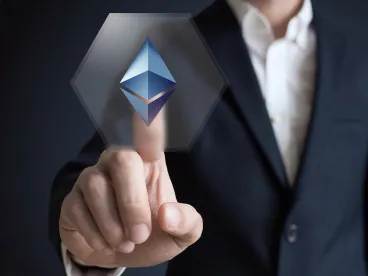Tech Transactions & Data Privacy 2022 Report
-
What we Saw in 2021
The year 2021 saw enormous growth in the use, interest and diversification of blockchain technologies. From the rise of non-fungible tokens (NFTs) as a digital art medium to the establishment of numerous bespoke cryptocurrencies, blockchain stood at the nexus of intellectual property, content creation and finance. The year 2022 will be another exciting year in blockchain as the gap between traditional contracting and contracting using blockchain continues to narrow. Polsinelli’s Technology Transactions team was at the forefront of bridging that gap in 2021 through a novel fusion of Ethereum’s smart contracting capabilities with sophisticated in-bound and out-bound content licensing. This article sets forth the fundamentals of how Ethereum blockchain was used to navigate complex licensing issues arising from the creation and hypothecation of digital assets.
-
How Ethereum Smart Contracts Work
Foundationally, Ethereum blockchain is a platform that uses distributed ledger technology to execute and validate smart contract transactions. Each transaction is called a “block” and connects with the previous transaction as the next link in the chain of transactions (hence the term “blockchain”). Each participant in a blockchain holds a complete copy of the entire ledger and all of its transactional history (NFTs use this feature, for example, to prove digital art ownership and provenance).
When a new transaction or a change occurs to the blockchain, the new transaction must be approved by the blockchain network using a consensus mechanism. The consensus mechanism used depends on whether the blockchain is privately or publicly accessible. A blockchain is public when it is open to all participants and does not require permission from others. A private blockchain requires permission to transact from a private party authorized to transact on the network. Because of this permission structure, private blockchains may be subordinated to written agreements between parties related to the use of the blockchain.
-
A Novel Approach to Content Licensing
Leveraging the ability to establish top-level written agreements on a private blockchain, Polsinelli developed a novel licensing model for digital assets (Assets) on behalf of an independent gaming platform (Platform). The process starts with a traditional content license and hosting agreement (License Agreement) that transfers Assets to the Platform which are then published on the Platform’s web-based digital asset marketplace. The License Agreement further establishes key transactional issues such as intellectual property rights, the division of royalties between the Platform and content creator, the number of License Tokens (described below) available per Asset, the cost of each License Token to an end-user and the overall process by which the Platform will sublicense and market the Assets to end-users. Once the Asset is published on the Platform, an end-user can procure access to the Asset by purchasing a License Token. The License Token serves as the gatekeeper for accessing Assets. If the end-user does not have the required License Token, the Platform provides the end-user with ability to purchase said License Token and once the License Token is added to the end user’s digital wallet, the end-user can access the Asset (subject to any stipulations on use e.g., end-user license agreements). This process is executed via Ethereum smart contract, which manages both the distribution of the Asset to the end-user and the real-time payment of royalties to the content creator and the Platform.
-
A Bottom-Up Approach to Content Creation
End-user use and consumption of Assets is not the only benefit the Platform offers. Through the Platform, content creators can list, sell or license their Assets, which can then be leveraged by other content creators to build new digital content in a collaborative or derivative manner. As digital content creators generate new content, the Ethereum smart contracts tied to the underlying Assets comprising the new content are again leveraged to facilitate real-time royalty payments for the licensing and sale of the new digital content as whole. This process creates a decentralized model allowing for a bottom-up approach to content creation and monetization. This, in turn, creates an additional incentive for independent creators to develop new and diverse content. Content creators also have the option of developing new content as a “work made for hire” directly for the Platform under a content authoring agreement. This approach can award a larger initial payment to the creator but a smaller royalty on sublicenses to end-users. That gives flexibility to how content creators engage in the development and monetization of their works.
-
Looking Ahead in 2022
We expect the model above will be further refined in 2022 and deployed in other unique ways for the distribution and monetization of digital content. We foresee, for example, the creation and management of decentralized autonomous organizations (DAOs) that leverage smart contracts to raise capital for the creation and sale of digital assets. In theory, a DAO could award voting share tokens (similar to the License Tokens discussed above) to investors according to their respective contributions to the DAO. Investors would then be able to vote their tokens on unique content creation proposals with smart contracts reviewing the votes and the corresponding tokens to determine if the proposal is approved. If approved, funds from the DAO would then flow in real-time to content creators to fund their digital asset creation. Naturally, royalties resulting from the sale of these digital assets would be automatically distributed to investors according to their respective voting share tokens.
-
Conclusion
Using Ethereum smart contracts and distributed ledger technology to execute transactions on the blockchain to establish rights in the use and distribution of content allows both content creators and content hosting services to financially benefit from sublicensing of content to end-users and relicensing content to other creators.





 />i
/>i

